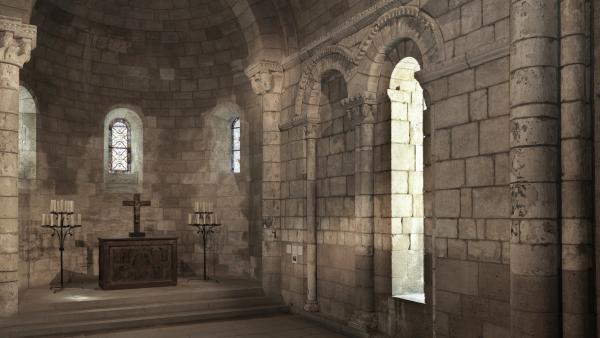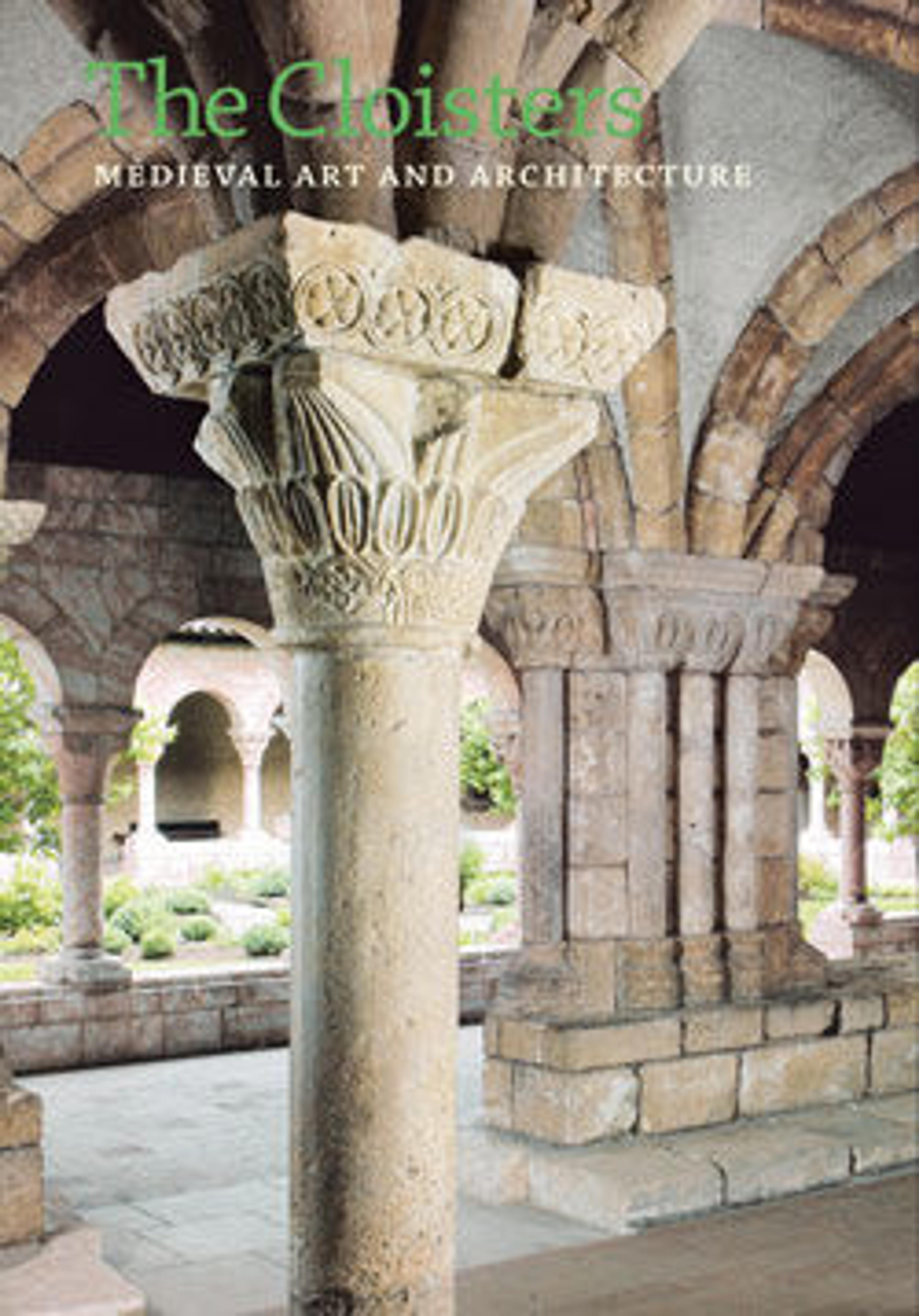Chapel from Notre-Dame-du-Bourg at Langon
The large heads on the capital to the right of the altar were once thought to represent Henry II of England and his wife Eleanor of Aquitaine, who in 1155 visited the monastery upon which the chapel was dependent. This seems unlikely, however, as similar capitals with crowned heads are rather common in Romanesque architectural sculpture. The images on the capitals appear to have no religious or narrative significance. Shaded areas indicate original elements.
Artwork Details
- Title: Chapel from Notre-Dame-du-Bourg at Langon
- Date: after 1126
- Geography: Made in Aquitaine, France
- Culture: French
- Medium: Limestone
- Dimensions: 15 ft. 4 in. × 18 ft. 8 in. × 23 ft. 10 in. (467.4 × 569 × 726.4 cm)
- Classification: Installations
- Credit Line: Rogers Fund,1934
- Object Number: 34.115.1–.269
- Curatorial Department: Medieval Art and The Cloisters
Audio

Langon Chapel
Gallery 4
NARRATOR: The clean space and dim light of this room evoke a twelfth-century chapel, and, indeed, some of the sculpture near the apse comes from a chapel of this date in Western France.
One of the great treasures displayed here is a large statue of the Virgin Mary with the Christ Child, although the Child's head is not preserved.
More Artwork
Research Resources
The Met provides unparalleled resources for research and welcomes an international community of students and scholars. The Met's Open Access API is where creators and researchers can connect to the The Met collection. Open Access data and public domain images are available for unrestricted commercial and noncommercial use without permission or fee.
To request images under copyright and other restrictions, please use this Image Request form.
Feedback
We continue to research and examine historical and cultural context for objects in The Met collection. If you have comments or questions about this object record, please contact us using the form below. The Museum looks forward to receiving your comments.
